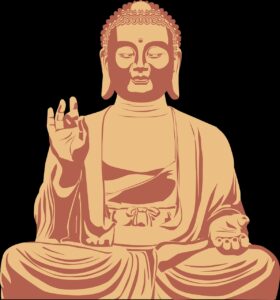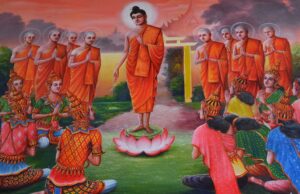According to facts and statistics about Buddha, gives an insight into the life of Budhha and also the origin of Buddhism as a religion.
“Be proud of your heart, it has been played, cheated, burned, and broken but still somehow works.”
- Gautam Buddha
Who was the Buddha?
In literary terms, Buddha means the one who is conscious or awake.
Many people carry this misconception that Buddha was a god but he wasn’t. Buddha was a mundane individual who happens to seek the deepest knowledge of the human world which led to his awakening.
So, who was Buddha? No one godly but an individual named Siddhartha Gautama.
“How people treat you is their karma; how you react is yours.”
- Gautam Buddha
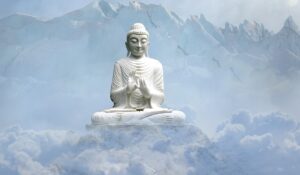
Meaning of Buddha
Though the term Buddha designates an individual it isn’t a name. It’s an identification.
According to the classical language of India, Sanskrit, a Buddha is a term that describes an individual who is awakened.
Siddhartha Gautama was the ‘enlightened one’ who was awakened to the knowledge of the world. With his profound insights that were different from any scriptures that existed during that time started the rumors of him being God.
“One who previously made bad karma, but who reforms and creates good karma, brightens the world like the moon appearing from behind a cloud.”
- Gautam Buddha
Buddhism
Buddhism is a religion based on philosophical traditions and originated in India around the 5th century BCE.
According to facts, it’s termed a religion that is successfully derived from the teachings of Siddhartha Gautama.
“Not even death can wipe out our good deeds.”
-Gautam Buddha
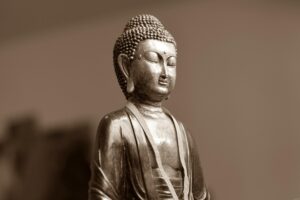
Fundamentals about Buddhism
Firstly, Buddhism is a faith.
Secondly, Siddhartha Gautama founded it.
Thirdly, in the recent period, it has a weight of 470 million followers all around the world and not only in India.
Fourthly, with its utmost increasing influence in the West, Buddhism gains its presence among major world religions.
Fifth, Buddhist monks have a unique term to describe them called ‘bhikkhus’.
“Those who are free of resentful thoughts surely find peace.”
- Gautam Buddha
Birth of Buddha
Siddhartha Gautama, ‘the Buddha’ existed on the face of the planet during the 5th century B.C in present-day Nepal.
The historical story related to Buddha sounds fascinating and also mythical too. Born in a well reputed and glorious family of royalty, it’s stated that his family always kept him aloof from the scene of poverty.
A narrative from sacred texts implies the prince living his life inside the boundaries of his fortress and never stepping out into the real world because of his parents’ orders.
A prophet warned his parents, whose prophecy indicated Siddhartha leaving his home and family in order to seek knowledge of the world by seeing the poverty and misery around him.
In order to keep their son protected and around them his parents showed him wealthy and prosperous areas of the world and hid the actual real world.
“A Buddha is an idle person. He doesn’t run around after fortune and fame.”
- Gautam Buddha

ENLIGHTENMENT
Nevertheless, the prophecy indeed came true.
On withstanding the sufferings of the populace around him and seeing death for the very first time, Gautama left his property and wealth. Deeply moved by the dark reality of the world he set on a journey of finding the true meaning.
Siddhartha, giving 6 years of his life finally receives enlightenment under a Bodhi tree.
Enlightenment stands for a state of reason and knowledge.
Siddhartha Gautama carried on with his teaching under the same Bodhi tree and was thus called, Buddha.
“Those who cling to perceptions and views wander the world offending people.”
-Gautama Buddha
Denial of God
Buddhism follows the denial of God or a supreme deity.
Instead of focussing on a particular deity or god, they focus on the power of spirituality, acquiring enlightenment.
“May all beings have happy minds.”
-Gautama Buddha
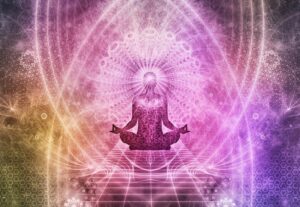
Teachings of Buddha
Buddha’s teachings are not teachings but it is knowing the way of life, adopted only through experience and by the following of dharma. That’s the reason the teachings of Buddha are famously known as dharma.
According to Hinduism, dharma means the natural order of the universe which is the cosmic order.
Buddha preached virtues such as:
Wisdom, kindness, patience, generosity, and compassion
It also preached five morals of life which include the prohibition of:
The killing of life, pocketing what is not given, sexual transgression, dishonesty, and no consumption of alcohol or drugs
Then comes the Four Noble Truths including:
Dukkha, samudaya, nirodha, and magga
Dukkha stands for the reality of suffering. Samudaya stands for the root of suffering, and Nirodha stands for the culmination of suffering. Magga stands for the path that sets us free from suffering.
All these noble truths tend to explain why a human soul suffers and paves the way to overcome the ache and the desired suffering altogether.
The fourth and final noble truth, magga follows an eightfold path. It has 5 stages:
Firstly, Samma-ditthi: correct understanding.
Secondly, Samma-sankappa: accurate thoughts.
Thirdly, Samma-vaca: right speech.
Fourth, Samma-kammanta: suitable actions.
Fifth, Samma-ajiva: decent livelihood.
Sixth, Samma-vayama: proper effort.
Seventh, Samma-sati: moral mindfulness.
Eighth, Samma-samadhi: actual concentration.
“Radiate boundless love towards the entire world”
-Gautama Buddha
Facts and statistics about Buddhism
The word Buddha means ‘enlightened’ and not ‘God’.
When Buddhist followers reach the stage of enlightenment, they tend to reach a higher spiritual stage called ‘the stage of nirvana’.
Buddhists meditate not because it’s mandatory but because it’s a belief. A belief that helps to awaken ones soul.
Buddha or Siddhartha Gautama passed away around 483 B.C.
After his demise, his followers carried on with his teachings. The teachings of Buddha laid the groundwork for Buddhism.
The great Mauryan ruler, Ashoka the Great, first officially introduced Buddhism as a religion.
With his introduction of Buddhism as a state religion, it started reaching its pace. A number of Buddhist monasteries came up and it also encouraged a list of Buddhist works such as missionary operations.
Some scholars however rest their case on the opinion that Buddhism isn’t a religion but a way of life.
Consequently, Buddhism doesn’t have a definite symbol. However, it uses various images that include the eight-spoked dharma wheel, the Bodhi tree, the lotus, and the Swastika.
Dalai Lama, the supreme head of Tibetan Buddhism, believed as the reincarnation of Avalokitesvara (a past lama) was born in 1935 called, Lhamo Thondup.
“A disciplined mind brings happiness”
-Gautama Buddha

Buddhism all around the world
With the advancement of Buddhism, there exist types of Buddhism. Based on the geographical region, the 3 types of Buddhism according to their religion are Theravada Buddhism, Mahayana Buddhism, and Tibetan Buddhism.
Theravada Buddhism: Found in Thailand, Sri Lanka, and Burma.
Mahayana Buddhism: Found in China, Japan, Taiwan, Korea, Singapore, and Vietnam.
Tibetan Buddhism: Found in Tibet, Nepal, Mongolia, Bhutan, and parts of North India





